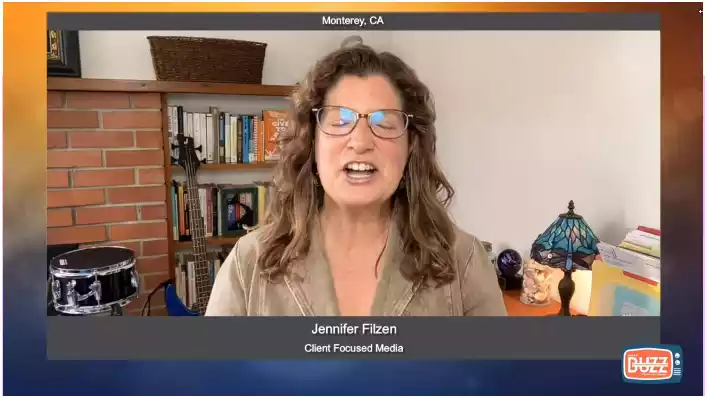What is Prior Authorization: Elevating Doctor Access
What is a Prior Authorization? Doctors, gain crucial Insights to Navigate Access Challenges and Seamlessly Optimize Patient Care. Call Now!

Explore valuable insights into Prior Authorization designed specifically for doctors at Portiva. Dive into the intricacies of what Prior Authorization involves, gaining valuable knowledge to effectively navigate access challenges and optimize patient care seamlessly. This in-depth guide is tailored to provide doctors with essential information, guaranteeing a smoother journey towards enhanced patient outcomes.
Here we go!
Table of Contents

Complex treatments or prescriptions typically require prior authorization. With it, coverage will be provided. Therefore, it is crucial to initiate the authorization process promptly.
To understand this, let’s take a scenario: When patients visit the pharmacy to fill their prescriptions, the clinical pharmacists are frequently informed that their insurance health plans will only cover the medication if the doctor receives approval.
Patients might have to wait a long time, ranging from days to months, for a crucial test or medical procedure to be scheduled because doctors need authorization from the insurance company.
The plans often create standards for this review, using medical guidelines, cost, utilization, and other information. Different insurance companies have different plans and guidelines for obtaining prior authorization.
What is the Difference Between Preauthorization and Prior Authorization?
For many people, both of these might sound similar. Well, who could blame them? The word “prior” means the existing or coming before in time, order, or importance. Meanwhile, the word “pre” means the same as before. But there is a difference between prior authorization and reauthorization, and we will discuss that below;
Preauthorization:
Insurance companies use preauthorization to determine if a patient can receive specific procedures, medications, or tests, except in emergencies. This process helps determine if a service, treatment plan, prescription drug, or durable medical equipment is medically necessary.
Prior Authorization:
If a healthcare provider wants to perform specific medical procedures, prescribe certain medications, or use devices that involve high costs, the insurance company will first have to approve. This is the prior authorization process.
Why the Prior Authorization Process is Important
Costs:
Health insurance companies use prior authorization to ensure they’re spending money on the right thing: patient outcomes and treatments. This process helps them avoid unnecessary expenses and keeps the overall cost of health plans reasonable.
Finding Alternative:
Prior authorization helps patients and insurance companies explore alternative methods of medication or treatment that might be more cost-effective.
For example, if a doctor prescribes a pricey medication, the insurance company should ensure that there aren’t more affordable options that would work just as well. This may help the patient and health insurance company get treatment while reducing costs.
Communication:

Through this mutual decision-making process, the provider and insurer work together to resolve concerns or examine other possibilities. The final approved services are required by medical necessity policy and coverage limits outlined in government regulations.
Management:
Imagine healthcare as a big kitchen where doctors, nurses, and resources are the chefs and ingredients. Now, think of the prior authorization process as the head chef making sure every dish is made with the right ingredients and in the right way.
In this kitchen, resources are like precious ingredients. We want to use them wisely, just like a chef would only use a little of an expensive spice. Requiring prior authorization is like the head chef checking and approving each recipe beforehand, ensuring we save our valuable resources.
It’s not just about ingredients; it’s also about managing how everything is cooked. The head chef keeps a close eye on the cooking process to avoid mistakes. Similarly, in healthcare, prior authorization helps actively manage how medical services are used.
How Often is Prior Authorization Used:
A 2021 KFF Issue Brief noted that little data is available on how often prior authorizations are requested, what for, and why they have been denied. More importantly, there needs to be more evidence about whether reviews impact patient care or costs.
Yet the same report showed that 99 % of Medicare Advantage enrollees are in plans requiring prior authorization for some services. The initial approval procedure normally requires about two days; however, an urgent request can speed it up.
A survey by the AMA among physicians handling prior authorizations found that they average 41 such activities per week, or almost two whole business days for each doctor and staff.
The Process Of Prior Authorization:
The process begins when the healthcare provider identifies a patient requiring a particular procedure, test, medication, or device. Then, the provider should verify the health plan’s policy rule to see if it’s a private plan.
Rules to see if prior authorization is needed for the prescribed treatment plans. If necessary, the provider must complete and sign an initial authorization request form to approve care and services.
Different health insurance companies have other health plans. And their policies change over time. The healthcare providers might have an outdated form or information related to the prior authorization process.
The healthcare provider must follow up with the insurance company until the prior authorization request is resolved. This method of prior authorization is often unstructured and improvised, perhaps leading to a denial of the request, resulting in a waste of effort.
I'm very thankful for Portiva who I know is looking after my practice while I'm gone the virtual assistants can manage prescription refills, documents they can triage patients and just kind of answer administrative questions and they can handle a lot on their own. But also, they're very good about contacting me if there's any emergency or anything I need to attend to. So I'm very thankful for Portiva they can help almost any provider almost anywhere and it really allows for some good work-life balance as I'm getting to experience right now at my family farm so I'm very thankful for Portiva and I'm very happy to use their services"

Board Certified Family Medicine Physician

Portiva's Virtual Medical Assistant - I have all the support I need. There's somebody checking my email, any patient messages. Patients are still able to schedule and handle any scheduling issues and any kind of billing that needs to still go through. Portiva hands handles it all for me. I have support i have somebody that I can access 24/7 pretty much. It's all very seamless. If somebody has an emergency or needs a medication called in. I know that the va's at portiva will handle that for me.

Board Certified Family Medicine Physician

Drawbacks Of Prior Authorizations Process:
There are many drawbacks to the prior authorization process, and the most common are the following;
Time Consuming:
Patients’ health care conditions and providing the proper treatment on time are the primary concerns and objectives of health care providers. Unfortunately, often, it takes weeks or months for prior authorization approval by health insurance, which can affect the patient’s condition.
If the health plan insurance company has a track record of delaying or denial of many the prior authorization. Then, the patient can become stressed due to thinking of the financial burden they have to bear if the request is declined. Affecting patient adherence and condition.
Administrative Burden On Healthcare:
The prior authorization process is a major obstacle for healthcare providers. However, prior authorization tasks and responsibilities add hiccups to the workday for busy healthcare providers.
The prior authorization process is full of obstacles for healthcare providers. They must deal with paperwork and extra tasks, complicating their workday. This means they spend time on administrative stuff that could be used to care for patients.
Challenges of Prior Authorization in Healthcare

The cumbersome nature of paperwork, form-filling, and communication with insurance entities transforms the daily work routine of healthcare professionals into a labyrinth of administrative tasks. This administrative burden not only consumes valuable time that could be dedicated to patient care but also introduces complexities that healthcare providers must navigate.
The constant need for prior authorization can add stress, particularly when health insurance companies have a history of delays or denials.
As a result, the administrative burden associated with obtaining approval becomes a tangible obstacle in providing timely and efficient healthcare services, impacting both the healthcare professionals and the patients they strive to serve.
Complexity Leads to Confusion:
The prior authorization can be complicated by the process and different types of health insurance companies with their complex policies. Every insurance company has its evaluation criteria, documentation, and approval procedures.
Nurses and administrative staff are among those who have to face such variations, which require additional time and effort to understand and then follow up. This increases the overall complexity of the process.
Cost Of Healthcare:
Getting prior authorizations involves various administrative work- filling out forms, collecting detailed materials, and communicating with insurance companies.
This paperwork creates extra work, and healthcare providers need more staff and resources to handle it all, increasing costs. These administrative costs become part of the overall healthcare expenses, affecting the service prices and patients’ pay.
Recently, technology and software features that reduce the costs imposed by prior authorization processes have been introduced. The most recent of these features is letting the healthcare providers know about current health insurance guidelines or plan changes.
This frees up healthcare providers to do more important things. The software covers things having to do with prior authorizations.
Miscommunication:
The reasons for miscommunication are also very complex. Miscommunication between healthcare providers and insurance carriers can create confusion, denials, or delays.
Communication is the key to a smooth and well-run prior authorization process. Mistakes or misunderstandings about why a procedure or treatment is medically needed can also lead to delays or denials.
This miscommunication may arise due to poor documentation, incomplete submissions, or insurer requirements.
A Closer Look at Prior Authorization in Medical Services

The American Medical Association has actively grappled with the challenges of prior authorization in the American healthcare landscape. This multifaceted procedure, often criticized for its time-consuming nature and administrative complexities, assumes a pivotal role in the healthcare system.
Health insurance companies deploy prior authorization as a safeguard, meticulously evaluating the necessity and cost-effectiveness of medical services. While the intentions align with responsible fiscal management, criticisms persist regarding its impact on patient care. In the ever-evolving healthcare sphere, collaborative efforts between the American Medical Association, healthcare providers, and health insurance companies remain crucial to addressing the nuances of prior authorization, mitigating its drawbacks, and enhancing the overall experience for those involved.
Navigating the intricacies of the healthcare system often involves grappling with the concept of prior authorization, a process where a health insurance company evaluates the necessity and coverage of medical services.
Amidst this labyrinth, health insurance companies play a pivotal role in scrutinizing the requested procedures or treatments through a meticulous medical necessity review. This critical assessment ensures that the proposed medical interventions align with established guidelines and are deemed essential for the patient’s well-being.
The term “prior authorization” underscores the importance of seeking approval before pursuing certain medical endeavors. It’s a collaborative dance between healthcare providers and insurance entities, where the latter scrutinizes the requested care to strike a balance between fiscal responsibility and providing the required medical support.
The intricate web of prior authorization, health insurance companies, and medical necessity review underscores the delicate negotiation between cost-effectiveness and optimal patient.
Conclusion:
That’s what prior authorization is all about. For example, take the case of a patient whose healthcare insurance program is responsible for picking up his bill. Arranging for insurance to pay the patient’s bills is prior authorization.
There have been examples where prior authorization has been applied, and there are grounds for its usefulness. The process has three main stakeholders: patients, insurance, and healthcare providers. When you hear about prior authorization, consider it a teamwork approach to ensure everyone is on the same page about paying for medical expenses.
To learn more about how our virtual health assistant applications can enhance your medical practice, visit our homepage.
- What constitutes the practice of prior authorization within pharmacies?
- What constitutes the practice of prior authorization within insurance companies?
- What constitutes the practice of obtaining prior authorization for prescription drugs?
- How does Medicare’s prior authorization requirement apply to surgery?
- What constitutes the practice of obtaining prior authorization in Medicaid?
- How does thorough preparation affect the speed of medication prior authorization?
- Is prior authorization a standard procedure within Medicare’s healthcare offerings?
- How does Prime Therapeutics ensure confidentiality and privacy in the prior authorization process?
- What implications does the medication prior authorization process have on timely access to treatment and patient satisfaction?
- How to navigate the appeal process for a denied prior authorization?
- How does Medicare’s prior authorization process align with industry standards for patient care and safety?
- How can patients be proactive in the prior authorization process?
- How does the complexity of medication regimens affect the need for prior authorization?
- How do prior authorization nurses measure the success and effectiveness of their work?
- What professional development opportunities exist for pharmacists specializing in prior authorization?
- How do remote prior authorization specialists assess their effectiveness and impact on healthcare outcomes?
- What does Medicare’s protocol for prior authorization entail for surgical procedures?
- What does the requirement of prior authorization imply for Medicare beneficiaries?
- What are the future trends in managing medical prior authorization within the healthcare industry?
- How does Express Scripts’ prior authorization process align with industry standards for patient care and safety?
- What are the long-term implications of preauthorization or precertification denials for patients and providers?
- What impact does prior authorization have on the healthcare system as a whole?
- What are the future trends in managing insurance prior authorization within the healthcare industry?
- What are the implications of the prior authorization process on healthcare accessibility and quality?
- What are the implications of the prior authorization process on healthcare delivery and patient satisfaction?
- What are the implications of the prior authorization process for healthcare delivery and patient satisfaction?
- What professional development opportunities exist for pharmacists specializing in prior authorization?
- How do prior authorization pharmacists measure the effectiveness of their contributions to healthcare?
- How do prior authorization specialists evaluate their performance and contribution to healthcare delivery and efficiency?

